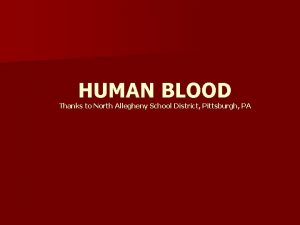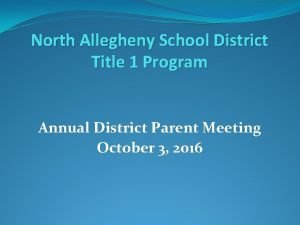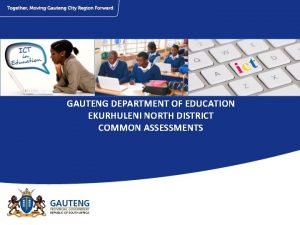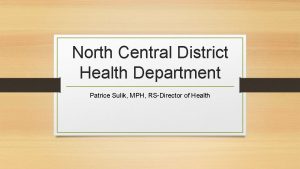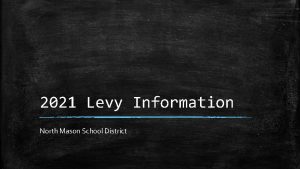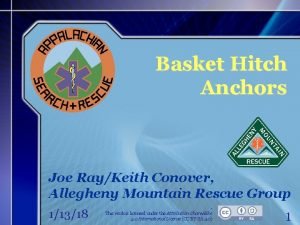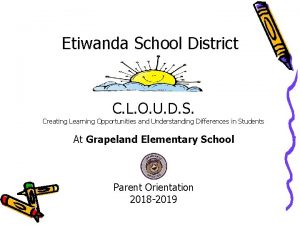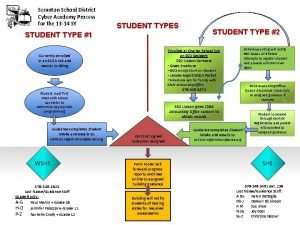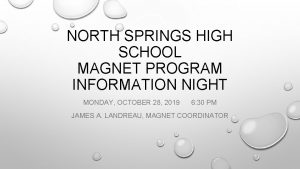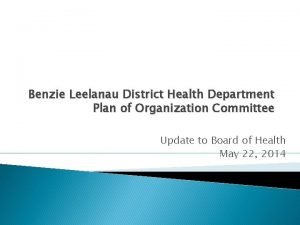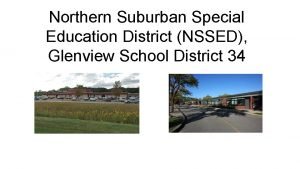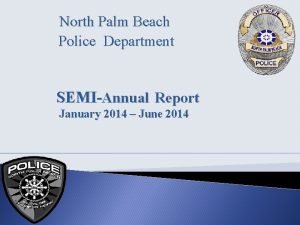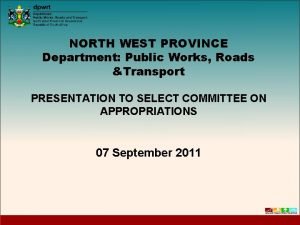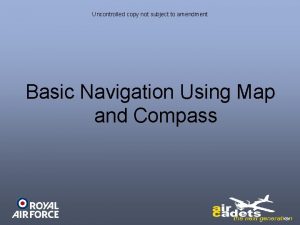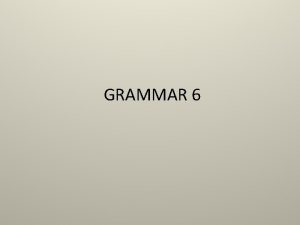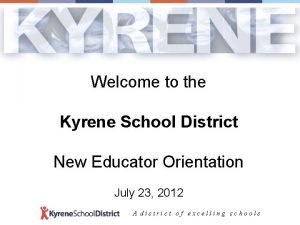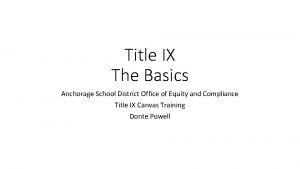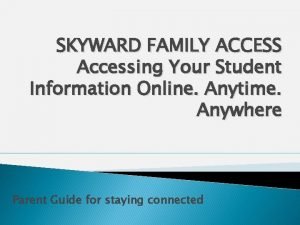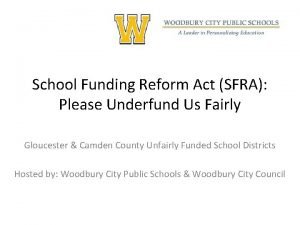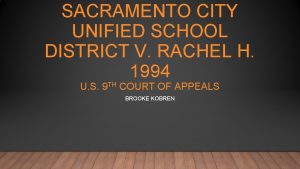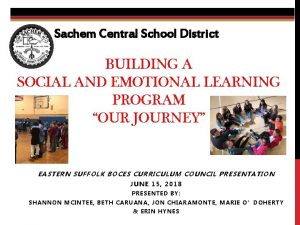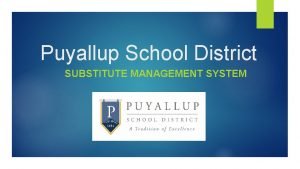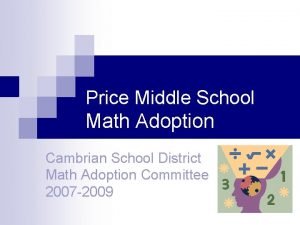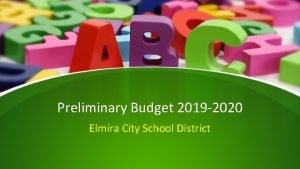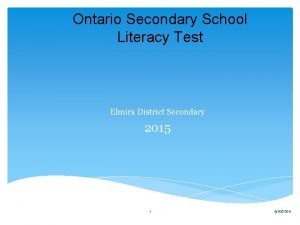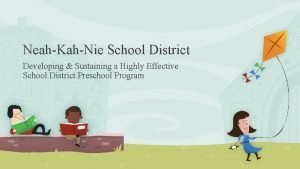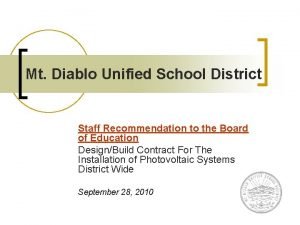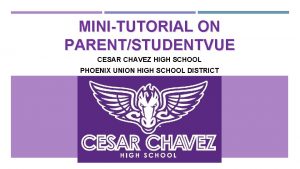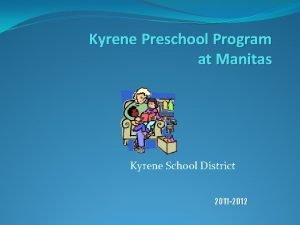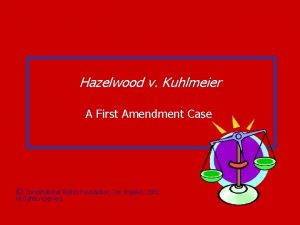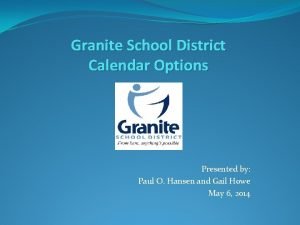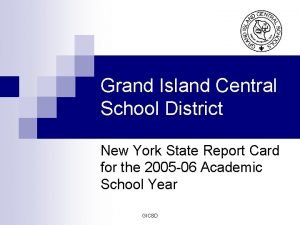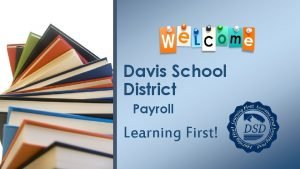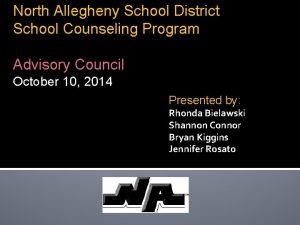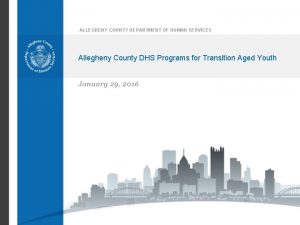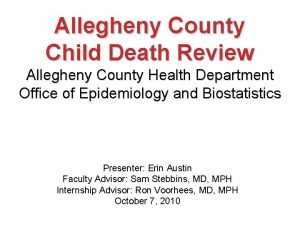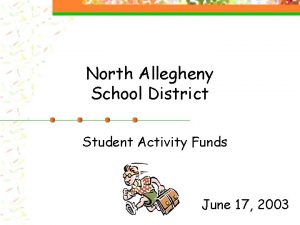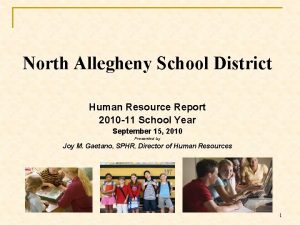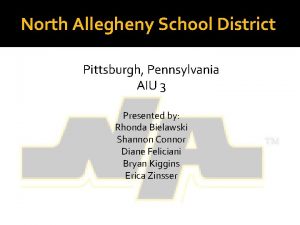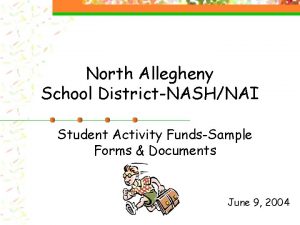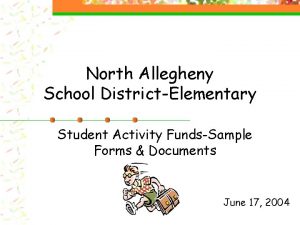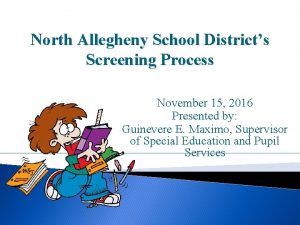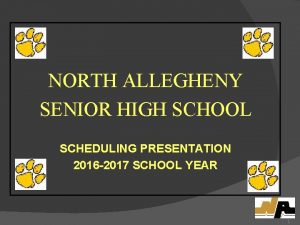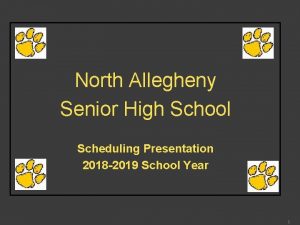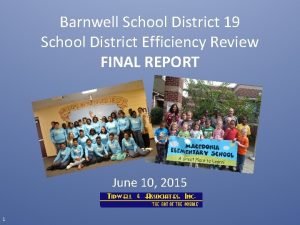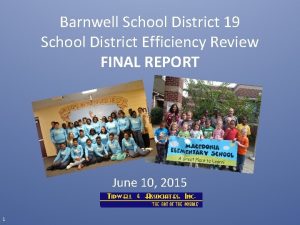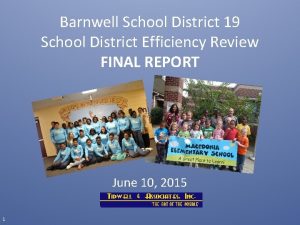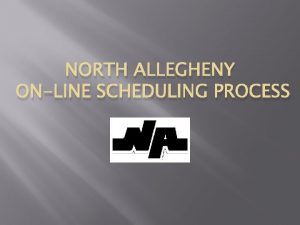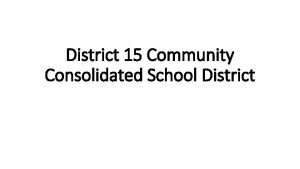North Allegheny School District GOAL Department Program Review
















































- Slides: 48

North Allegheny School District GOAL Department Program Review Report February 14, 2012 Presented by Members of the GOAL Review Team

GOAL Review Team Members � Consisted ◦ ◦ ◦ ◦ of Cross Representation of the District Elementary Teachers (K – 5) Secondary Teachers (6 – 12) Gifted Teachers (K- 12) Speech & Language Pathologists (Elementary & Secondary) School Counselors (Elementary, Middle & High School) Principals (Elementary, Middle & High School) School Psychologist

GOAL Management Team � Assistant Superintendents � Supervisor of Special Education � Building Principals/ Representatives (3) � Master Teacher of the Gifted Program � School Psychologist � Grade Level Facilitator � Coordinator of Academic Technology

GOAL Program Review Process � Adapted the North Allegheny School Curriculum Review Manual to structure the program evaluation process � Began November 2009 and concluded May 2011 � Examined the existing program � Studied empirical research � Attended presentations and lectures by experts in the field � Conducted surveys � Reviewed other high performing school districts across the Commonwealth and the United States

GOAL Program Review Process � Assigned members of the GOAL Program Review Team to Subcommittees ◦ Each Subcommittee consisted of representatives of the general and gifted education teachers by level (elementary, middle and high school), a school counselor and a speech pathologist � Assigned Subcommittee Leaders from the GOAL Management Team to facilitate the work of the Subcommittee and to organize the reporting of the Subcommittee's findings to the whole GOAL Review Team

Opening Activity With The GOAL Review Team Strengths of the Current Program � Aligned to Chapter 16 and Gifted Guidelines � Number of students participate in GOAL and/or GOAL activities � Number of Independent Options � IOWA Acceleration Scale (K-8) � Collaboration with their intellectual peers � Teachers representing the GOAL Department

Opening Activity With The GOAL Review Team Questions Needing Answers of the Current Program � Additional information related to the strategic plan � Clearly articulated philosophy: creativity, critical thinking, problem-solving, communication skills; New regulations require technology, foreign language, music/arts and leadership � Screening/Identification � Time to collaborate with general and gifted teachers � Differentiated Instruction � Referral rate and the number of students who qualify

Opening Activity with the GOAL Review Team Topics � Professional Development � Program Delivery by Levels � Differentiation/Regular Education � Program Implementation/Delivery � Screening Process/ Identification � Use of Matrices Topics � Collaboration with Regular and Gifted Education Teachers � Process to Differentiate (Connect) Curriculum � Philosophy � Review Research and Best Practice � Program Delivery

Subcommittees � Best Practices/Empirical Research � Data Analysis � Site Visitation/Exemplary Programs � Philosophy � File Review

Best Practices/ Empirical Data

Gifted Research/Best Practices Each child should come to school to stretch and grow daily. Schooling should be as an escalator on which students continually progress, rather than a series of stairs, with landings on which advanced learners consistently wait. Baska) (Van Tassel

Research Topics 1. 2. 3. 4. Methodology Program Delivery Social/Emotional Underachieving

Methodology �Grouping �Differentiation �Acceleration

Grouping �Cluster �Pull out �Full time �Cross grade �Self grouping

Differentiation �Product �Process �Content �Environment

Characteristics of Effective Programs � Content that is relevant to their lives. � Activities that cause them to produce important ideas at a high level. � Products that cause them to grapple with meaningful problems and pose defensible solutions. � Pacing in response to the student’s individual needs – acceleration or depth of topic. An understanding of ‘supported risk. ’ Teacher invites, cajoles and insists on risk-but in a way that supports success. (Tomlinson )

Program Delivery Options � Resource room � Integrated Curriculum � Pull-out � Self Contained � Cluster group � Cross grade placement � Full-time � Compacting � Differentiated classroom � Academic Competitions/Individualized Options

Social Emotional � Working with like peers. � Create safe environment to work at pace. commensurate with ability. � Teachers who work with gifted students have an understanding of their psychological needs.

Underachieving �Occurs when a student performs more poorly than would be expected, given his/her abilities or potential for academic achievement. �Early identification is a necessity.

Strategies for Underachieving Gifted Students Student Self-Assessment v Parent Interviews v Team Evaluation and recommendations v Action Planning which includes: v v. Identifying Appropriate Learning v. Developing Study Habits v. Setting Goals and Managing School Work v. Dealing with Personal Issues

Data Analysis

Program Consistency – Elementary Level v Elementary GOAL students in Grades 2 -5 participate in a weekly pull-out session for a unit time (ranges from 80 to 90 minutes per week depending on scheduling). They also participate in a 45 minute per week Individualized Option session. v Elementary GOAL students in Grade 1 participate in two 45 minute sessions a week or a total of 90 minutes a week.

Program Consistency - Middle v Every Building, Each Grade Level- "Assured Experiences" in class. v Additional "Optional Units"- As time permits. v Individualized Options (IO's)- 95% of IO's are attended by all 3 schools, most often together. v Select IO's are available only to one school. v Sometimes other school based activities prevent participation.

Program Consistency - Secondary v Some shared experiences- Chain Reaction, JETS, KMO, etc. v More experiences that are unique to the buildings- Open Heart Surgery, Physics Team, etc. v NAI- Focus is more on career exploration. v NASH- Continues career exploration but also does college preparationvisits.

Other Classes Taught By Elementary GOAL Teachers v GOAL teachers are responsible for teaching the Communication Arts Plus (CAP) and First Grade Early Readers enrichment program for grades 1 -5. Time per grade level per week varies between buildings and between grade levels based on scheduling availability--time ranges from 35 minutes per week to 60 minutes per week. v CAP Numbers: In 2010 -11, approximately 385 students qualified for CAP across the District. About 56% of these students are GOAL students as well.

Chapter 16 Screening Medical History/Health Records Readiness/Developmental Tests *Achievement Tests Ability Tests *Group IQ Tests Anecdotal Information Portfolio/Subject Assessments Syllabus-based Examination CBA’s College Aptitude Test PSAT/SAT Extra-Curricular Academic Performance *Rating Scales Interest Inventories Cumulative Records Enrollment Records Parent Inventories *Report Cards *current NA screening areas

Identification Summary 2009 -2010 GOAL Report Summary: District Analysis: � 267 students were evaluated during the 2009 -10 school year. Ten fewer students were tested than in the 2008 -09 school year. � The overall qualifying rate of 50% is 10 percentage points lower than the 2008 -09 rate. Historically, the range of qualification rates has been 55 -63%. Qualified DNQ TOTAL % Qualified 2007 -2008 122 101 223 55% 2008 -2009 166 111 277 60% 2009 -2010 134 133 267 50%

Identification Summary 2009 -2010 GOAL Report Summary: Conclusions: � The qualification rate of all referred students was 50%, which is a decrease from 2008 – 2009. The previous five year range was 55 – 63%. There was a 300% increase in the number of parent referrals. Parent referrals had an overall qualification rate of 50%. � Among the elementary buildings, there are no specific patterns in qualification rates from building to building or from year to year. � Students tested multiple times had a significantly lower qualification rate than in previous years. The overall qualification rate for students tested 2, 3, or 4 times is 10% compared to a 50% qualification rate for all referrals. The more frequently a student is tested, the less likely they are to qualify.

Current Elementary School Students in Advanced Academic Math In 2010 -11, 84 students in Grades 2 -5 participate in the Advanced Academic Math Program. 81% of these students are GOAL students.

Current Elementary School Students in the Arts 95% of Elementary GOAL Students participate in Band, Chorus, or Orchestra at school.

Current Middle School Students in the Arts • 94. 5 % of Middle School GOAL students participate in Band, Chorus, or Orchestra. • 5. 5% Take General Music. • All Middle School students take Unified Arts classes as part of the standard curriculum.

Current Ninth and Tenth Grade Students in the Arts • 79. 56% of gifted students in 9 th grade are taking courses in the Arts. • 68. 33% of gifted students in 10 th grade are taking courses in the Arts. • When the current 10 th graders were in 9 th grade, 70. 83% of gifted students took courses in the Arts.

Current Eleventh Grade Students in the Arts • 61. 16% of gifted students in 11 th grade are taking courses in the Arts. • When the current 11 th graders were in 10 th grade, 71. 07% of gifted students took courses in the Arts. • When the current 11 th graders were in 9 th grade, 69. 42% of gifted students took courses in the Arts.

Current Twelfth Grade Students in the Arts • 61. 07% of gifted students in 12 th grade are taking courses in the Arts. • When the current 12 th graders were in 11 th grade, 70. 23% of gifted students took courses in the Arts. • When the current 12 th graders were in 10 th grade, 79. 39% of gifted students took courses in the Arts. • When the current 12 th graders were in 9 th grade, 74. 81% of gifted students took courses in the Arts.

Honors Classes at NASH- 238 of 262 students are taking at least one Honors class (91%) � � � 15% are taking 1 Honors course 18% are taking 2 Honors courses 23% are taking 3 Honors courses 15% are taking 4 Honors courses 10% are taking 5 Honors courses 10% are taking 6 Honors courses

Honors Classes at NAI- 273 of 275 students are taking at least one Honors class (99%) � � � 3% are taking 1 Honors course 6% are taking 2 Honors courses 15% are taking 3 Honors courses 17% are taking 4 Honors courses 21% are taking 5 Honors courses 36% are taking 6 Honors courses

AP Classes at NASH- 221 of 262 students at NASH are taking at least one AP Course (84%) � � � 16% are taking 1 AP course 13% are taking 2 AP courses 20% are taking 3 AP courses 18% are taking 4 AP courses 10% are taking 5 AP courses 7% are taking 6 AP courses

PSSA- 2010 Elementary Data (grades 3 -5) Reading/Math: 9 Proficient 290 were advanced Writing: 14 Advanced 91 Proficient 4 Basic

Site Visitation/Exemplary Programs

School Districts Responding to the Questionnaire: v Fairfax County Public Schools v Fox Chapel School District v Garnet Valley School District v Naperville Community Unit District 203 v Cumberland Valley School District v Upper Dublin School District v Central Bucks School District v Lewisburg Area School District

Gifted Student Population/District Population Statistical Analysis School District Identified Gifted Students Total Gifted Population Elem. Mid. H. S. Fairfax County Public Schools 11, 390 78, 721 5, 610 20, 194 N/A Fox Chapel 170 83 204 1, 932 160 Naperville Community Unit District 203 Top 2% N/A Cumberland Valley School District 84 108 182 Upper Dublin 121 98 700 13, 000 Lewisburg Area School District 87 1, 006 1, 467 5, 110 1, 232 Grs. 712 598 Participates 4, 913 44 890 56 444 11. 4% 457 4, 388 10. 4% 408 4, 407 9. 3% 18, 072 ≈ 2% 374 7, 200 5. 2% 327 6, 951 4. 7% 1, 932 23, 023 8. 4% 5. 6% 187 1, 909 9. 8% 2, 600 8 N/A 149, 429 1, 400 1, 800 4, 478 Central Bucks 121 1, 140 2, 800 17, 000 1, 425 Garnet Valley School District 1, 867 Gifted % of District 50, 514 1, 031 127 Total District Population 575

Philosophy Summary (6 out of 8 Districts Responded) � Students ◦ ◦ exhibit exceptional ability in: Intellect/Academics Creativity Art Leadership

Philosophy Summary v Programs for highly able learners should include: v. Differentiated Curriculum. v. Acceleration, enrichment, and individualization at all educational levels. v. Higher level thinking skills emphasis. v. Creativity.

Philosophy

Goal Curriculum Review Philosophy Sub-Committee Process Ø Ø Video Presentation (Gwynn) What do we want our philosophy to look like? Ø Considerations: Ø Elements of video presentation Ø Audience Ø Length Ø Legality of what is in print Ø Review gathered philosophies Ø Considerations: Ø What do we like? Ø Which ideas match our data and research? Ø Write rough draft of philosophy Finish rough draft Complete final copy Submit work plan Submit final copy of philosophy Ø Ø

Exemplary Schools Reviewed (Local, Statewide and National) Ø Ø Ø Naperville Community Unit Unionville - Chadds Ford New Hope - Solebury Central Bucks Cumberland Valley North Penn Clarke County Mt. Lebanon Pine-Richland Parkway Shaler

Philosophy of the GOAL Department Ø North Allegheny's Gifted Education Program reflects and extends our Mission Statement to appropriately challenge and prepare our advanced learners to live productively in our changing society. While providing enrichment and a broad spectrum of educational opportunities, the gifted education program encourages the individual learner to develop personal responsibility, task commitment, self-discipline, independent learning skills, respectful conduct, and social/emotional balance. The development of critical thinking, problem solving, communication skills and creativity is shared collaboratively among the gifted learner, the parents, and the North Allegheny educational community.

Next Steps v Shared report with Assistant Superintendents and Superintendent of Schools. v Reconvene GOAL Management Review Team to begin the process of prioritizing recommendations and developing a plan.
 What type of map is this
What type of map is this North allegheny alumni
North allegheny alumni Tiger id north allegheny
Tiger id north allegheny Gde vision and mission
Gde vision and mission North central district health department ct
North central district health department ct North mason school levy
North mason school levy Elvin v. city of waterville
Elvin v. city of waterville Potomac section wv
Potomac section wv Matp allegheny county
Matp allegheny county Basket hitch anchor
Basket hitch anchor Etiwanda school district preschool
Etiwanda school district preschool Lodi unified summer school
Lodi unified summer school Al wadi kabir
Al wadi kabir Scranton school district cyber school
Scranton school district cyber school North springs magnet program
North springs magnet program Leelanau county health department
Leelanau county health department Northern suburban special education district
Northern suburban special education district District of north vancouver geoweb
District of north vancouver geoweb North palm beach police department
North palm beach police department Department of public works and roads rustenburg
Department of public works and roads rustenburg Anchor point fire vancouver
Anchor point fire vancouver True north vs magnetic north
True north vs magnetic north North east and north cumbria ics map
North east and north cumbria ics map Chapter 14 north and south
Chapter 14 north and south The north pole ____ a latitude of 90 degrees north
The north pole ____ a latitude of 90 degrees north Review and revise your tentative goal statement
Review and revise your tentative goal statement Kyrene ivisions
Kyrene ivisions Anchorage school district office
Anchorage school district office Skyward family access south kitsap
Skyward family access south kitsap Cherry hill school district+sfra
Cherry hill school district+sfra Sacramento city unified school district v. rachel h
Sacramento city unified school district v. rachel h Sachem school district
Sachem school district Frontline puyallup school district
Frontline puyallup school district Cambrian school district
Cambrian school district Elmira city school district calendar
Elmira city school district calendar Southampton township school district
Southampton township school district Elmira district secondary school
Elmira district secondary school Neahkahnie school district
Neahkahnie school district Humboldt unified school district
Humboldt unified school district Studentvue arroyo high school
Studentvue arroyo high school Kyrene preschool
Kyrene preschool Abc unified school district
Abc unified school district Hazelwood v. kuhlmeier facts
Hazelwood v. kuhlmeier facts Hazelwood v kuhlmeier background
Hazelwood v kuhlmeier background Gradebook granite
Gradebook granite Language arts
Language arts Emmett school bond
Emmett school bond Payroll davis school district
Payroll davis school district Bermudian springs school district calendar
Bermudian springs school district calendar
